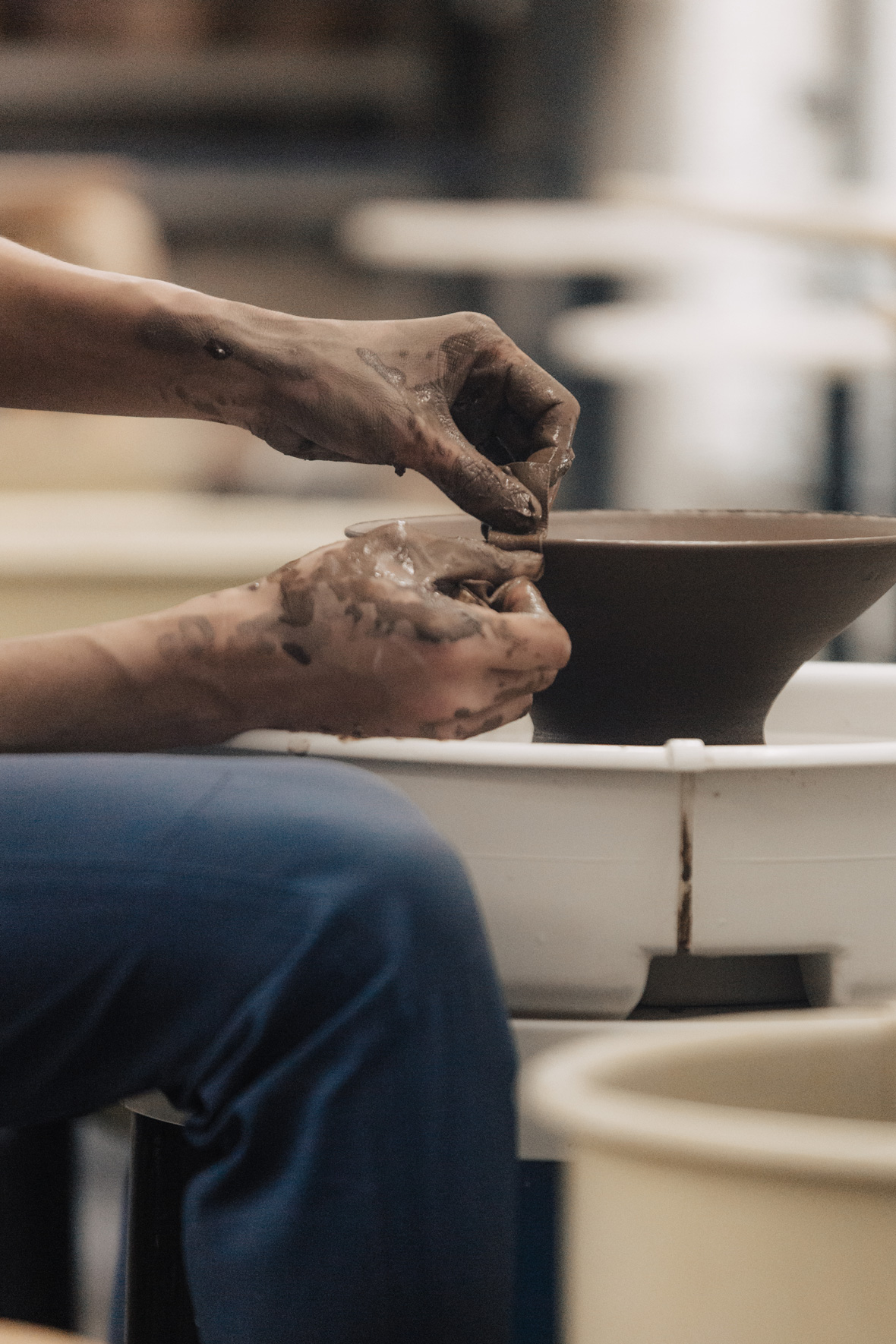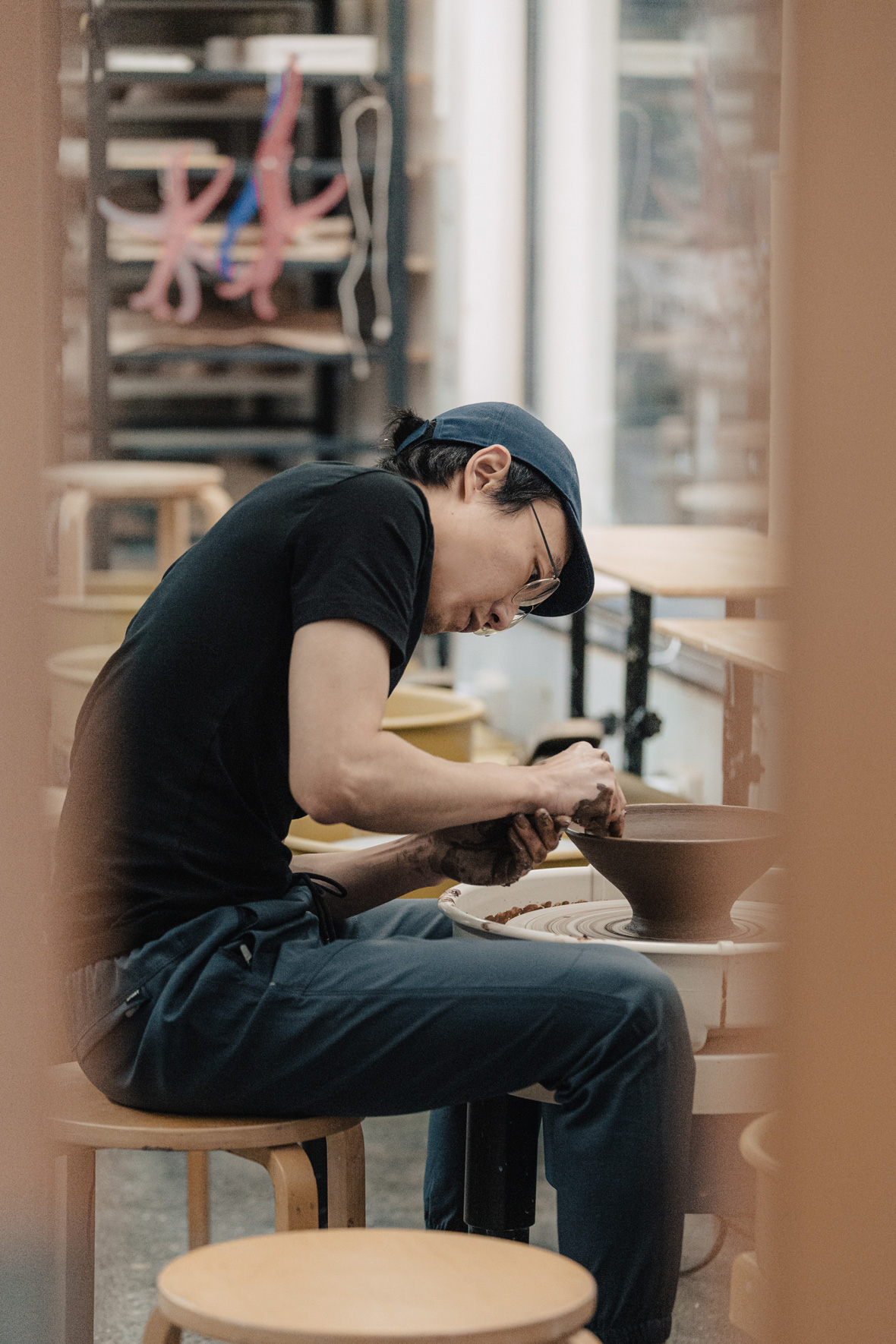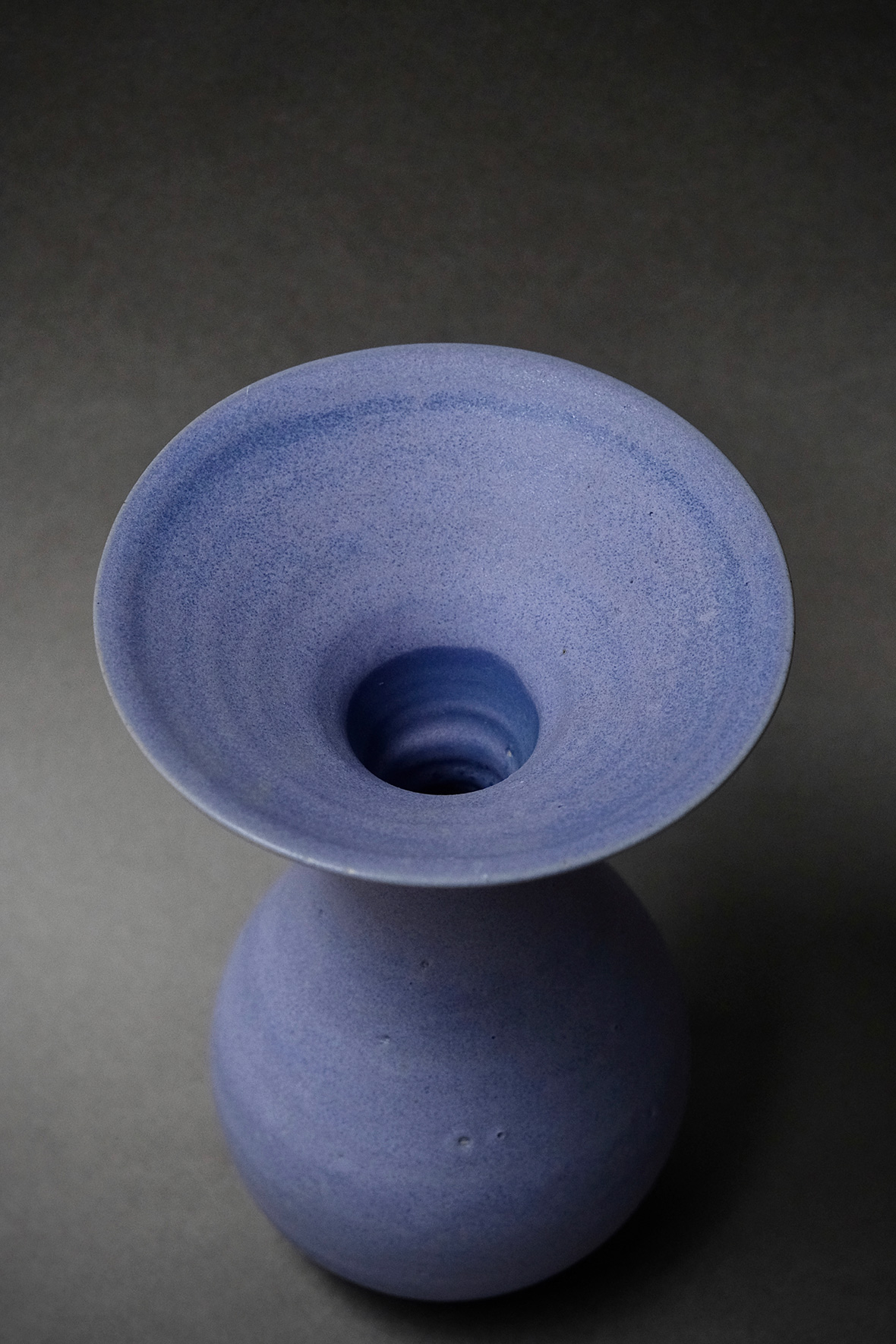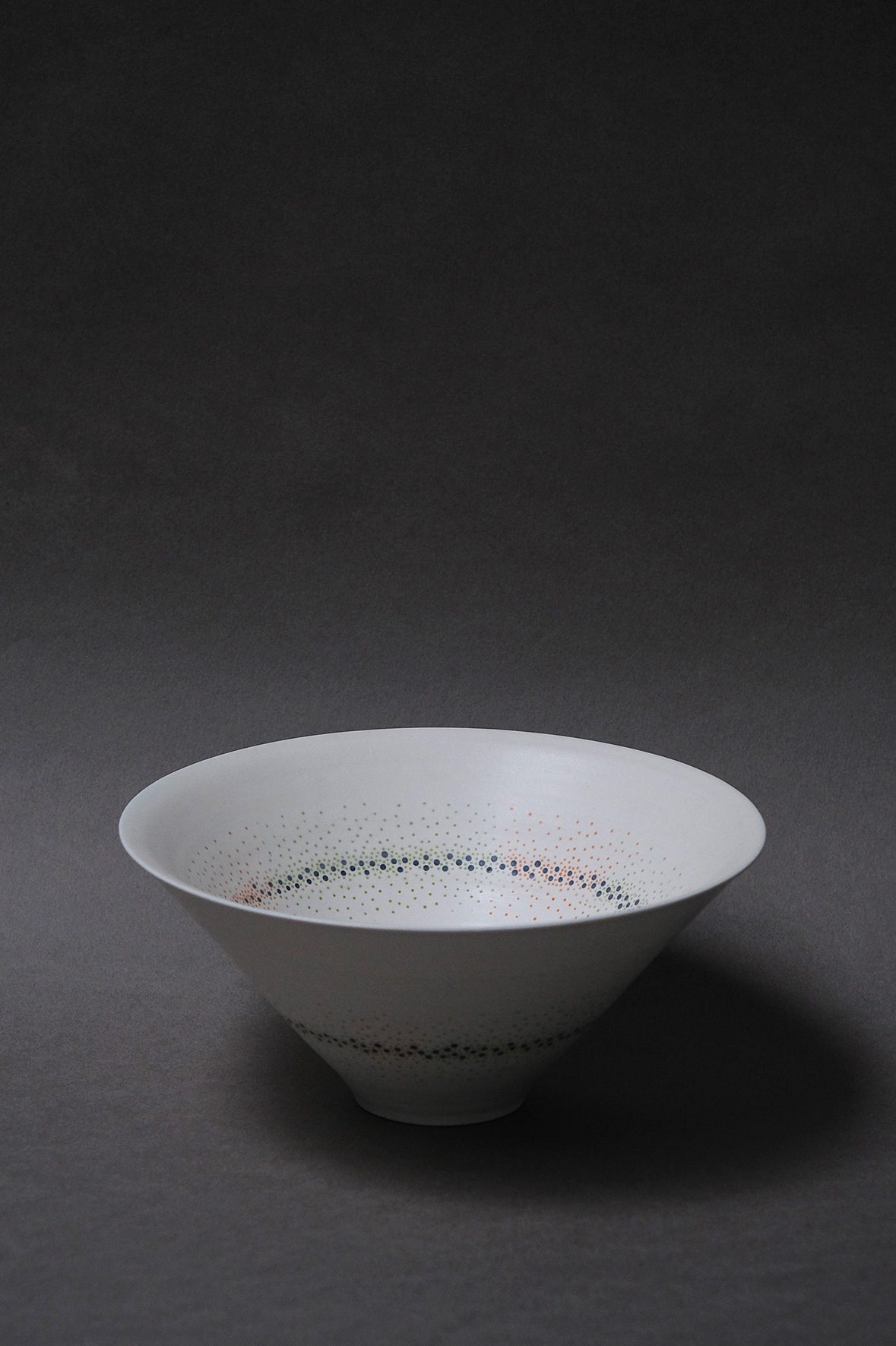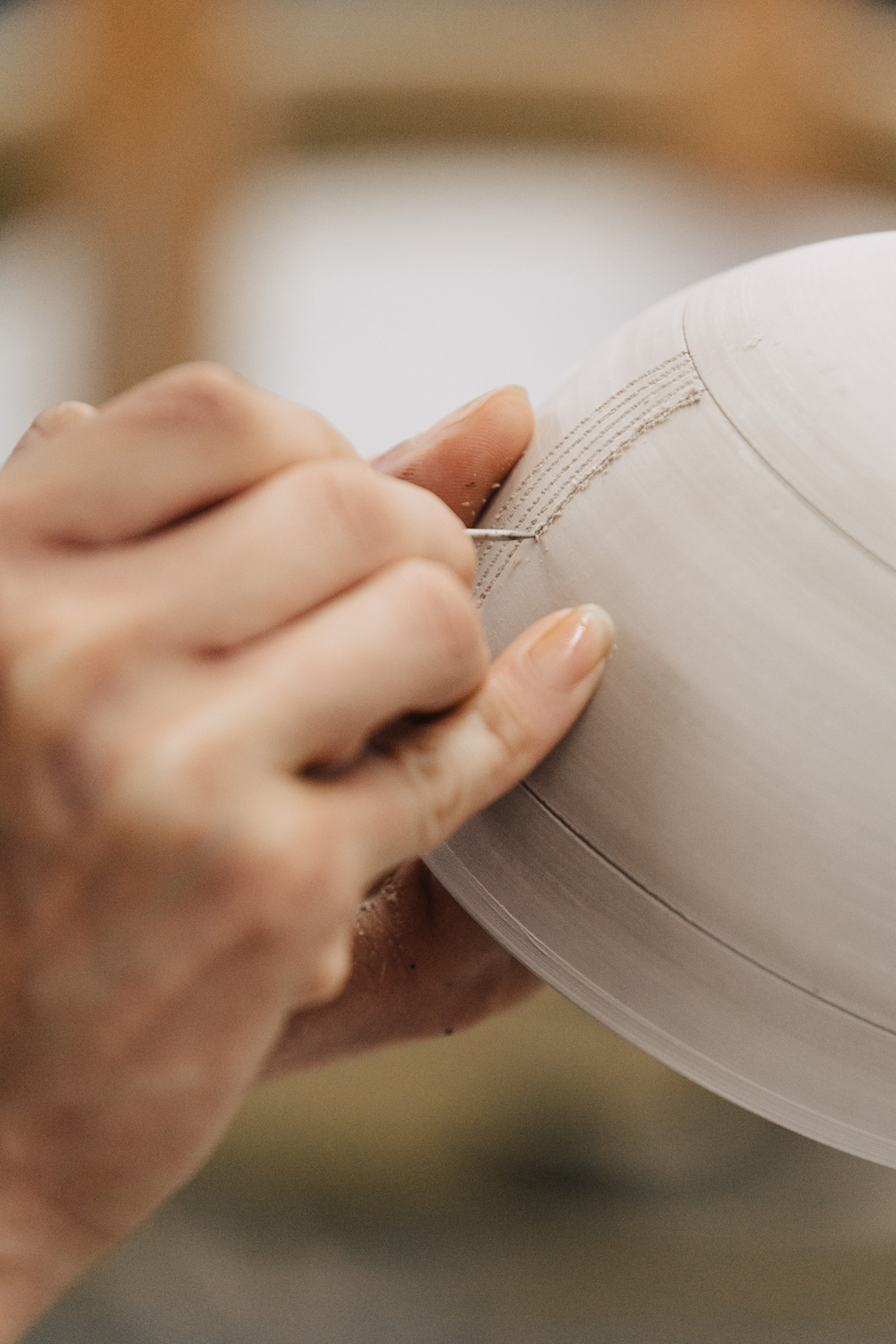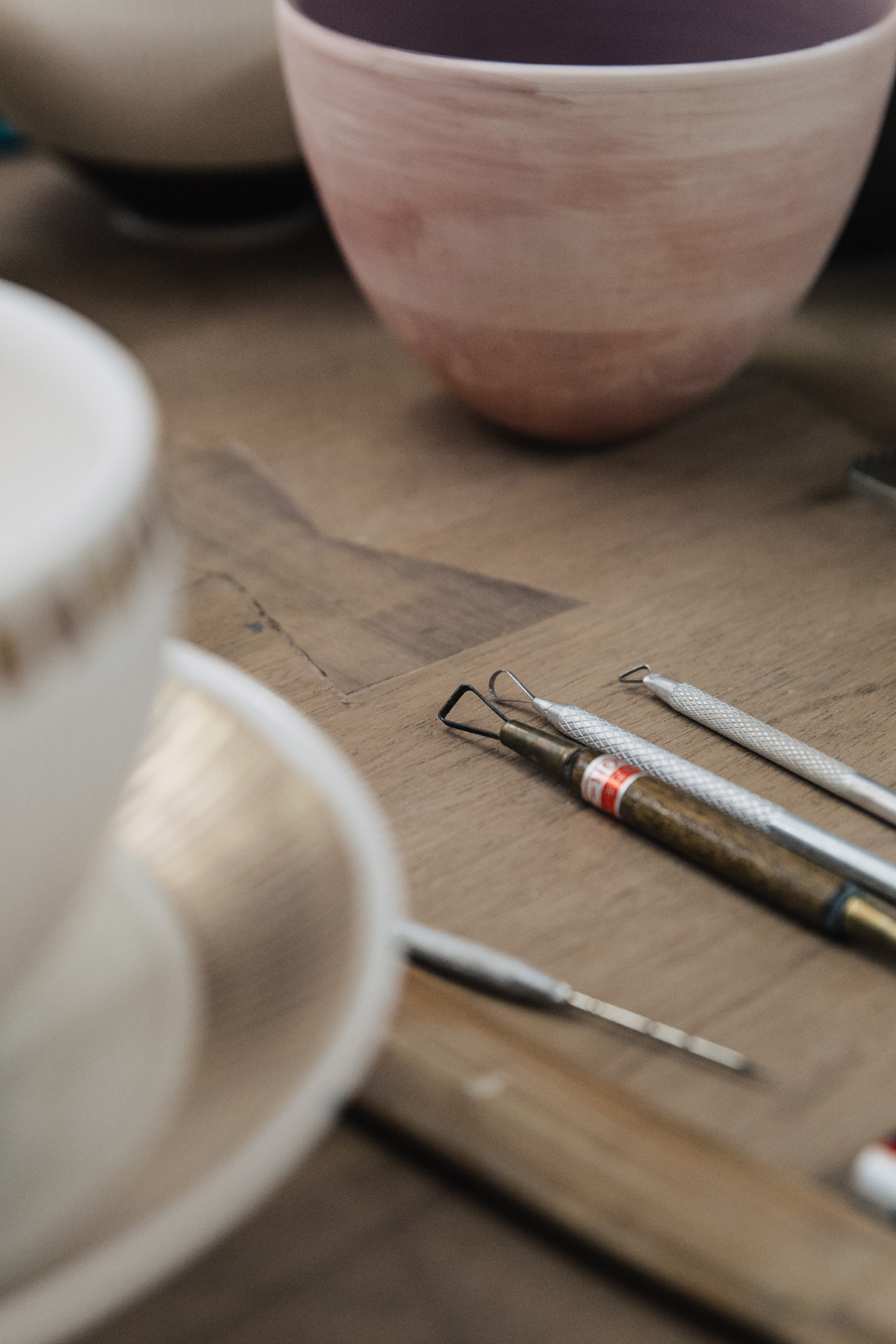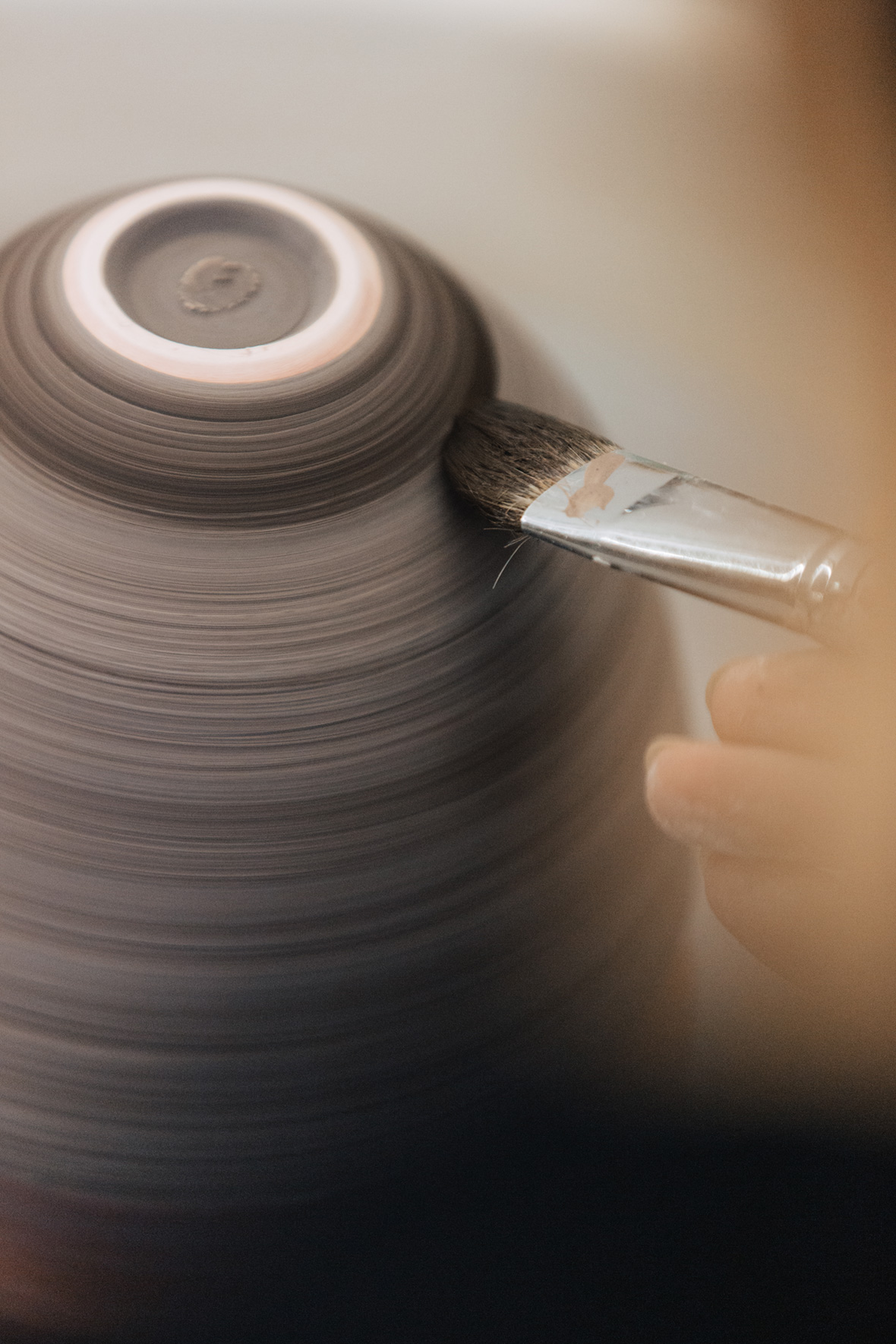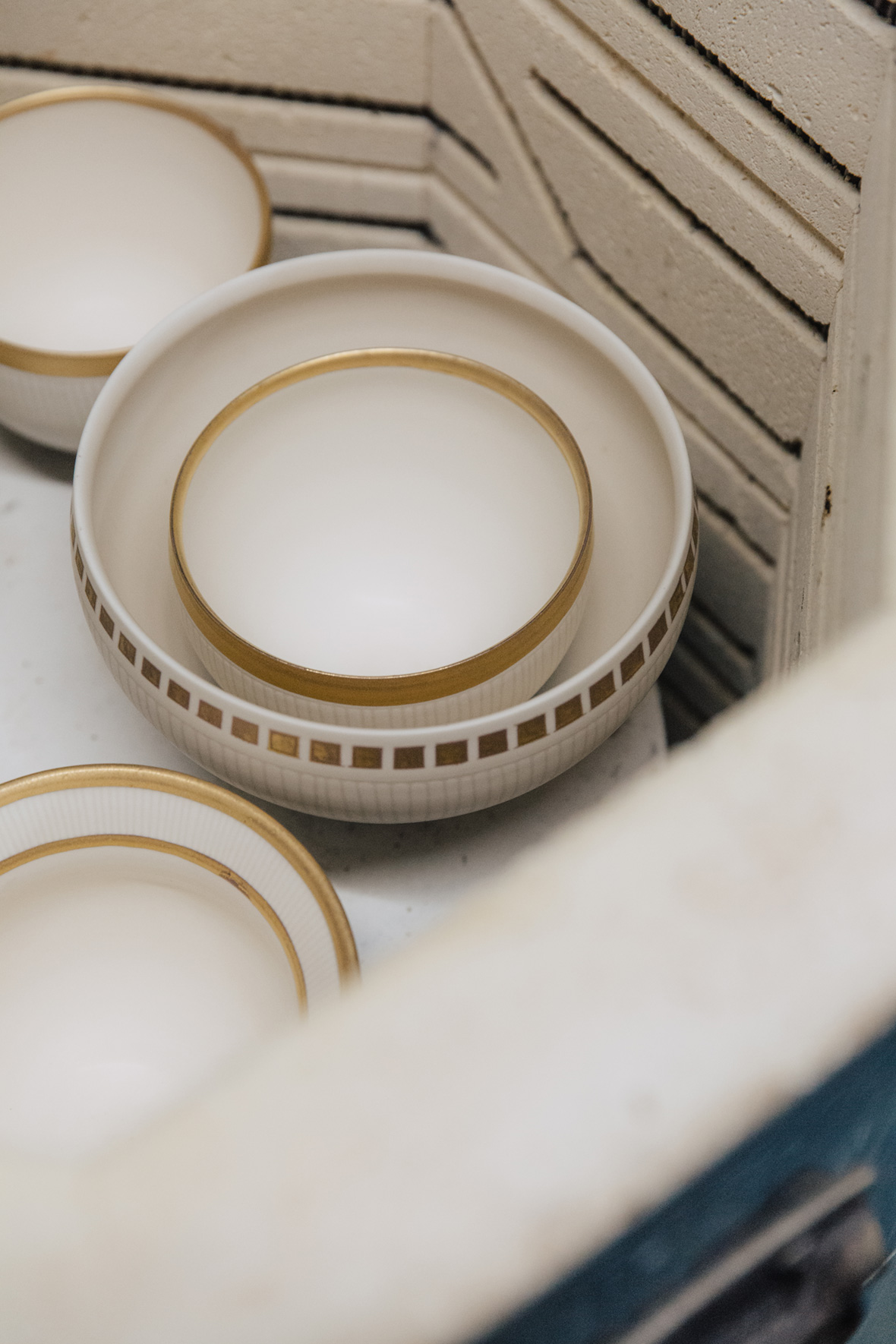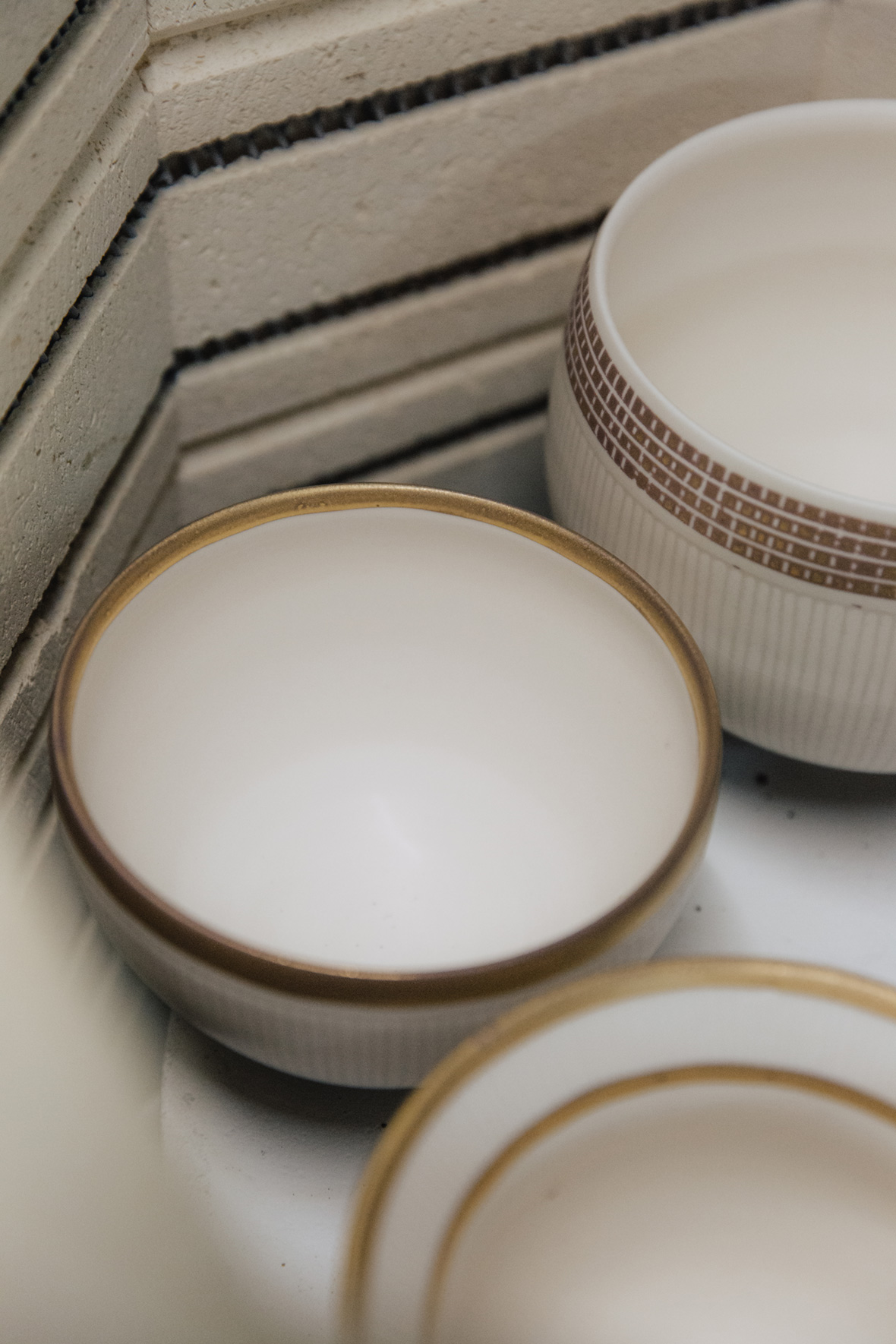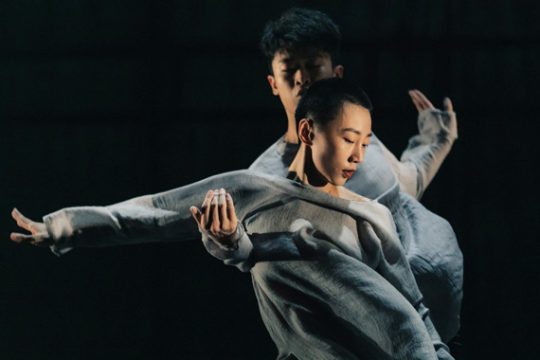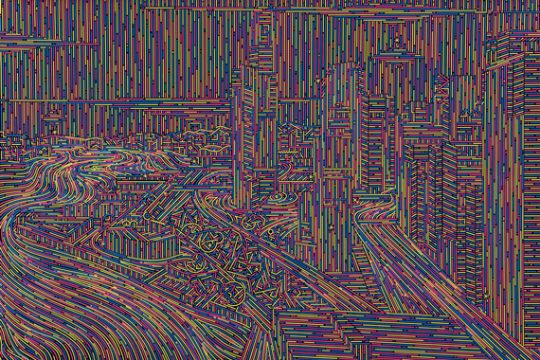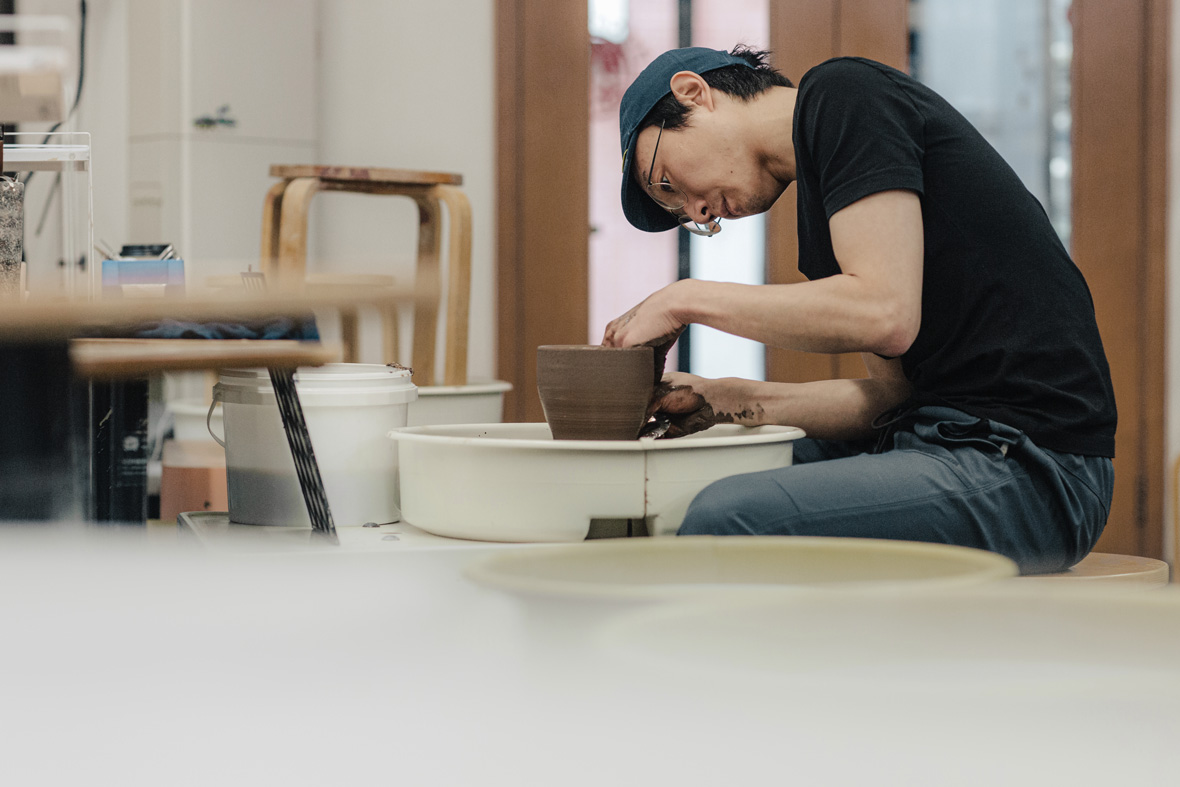
When Peng Cheng sat down for the first time at a potter’s wheel, something felt right. It was 2014, and he was working at iLook magazine in Beijing. As part of a special feature on millennials working in traditional handicrafts, Peng traveled to Jingdezhen, the porcelain capital of China, to interview young ceramic artists. A friend who ran a ceramics shop in Beijing made some introductions, and he quickly met and got to know a handful of artists for the feature. Later that year he decided to return. “Over the October holiday I went to Jingdezhen to visit them, and one of them, Luo Xiao, persuaded me to try throwing a bowl,” he recalls. “I quickly got the hang of it, and the clay didn’t feel at all unfamiliar to me.” Back in Beijing, he continued practicing his new hobby, which was quickly becoming an obsession, and in late 2016 he decided to take a year off to devote himself wholly to ceramics.
Now Peng lives in Shanghai, where he works in communications at the fashion brand Icicle. Pottery is mostly relegated to weekends and days off. Yet that hasn’t slowed him down: he still finds time to go to his local studio, PWS Shanghai, to throw, decorate, glaze, and fire bowl after bowl. Dozens of his works will be on display at his show Linger, opening next weekend at the ceramics gallery Chinale.
彭程第一次坐在陶轮前时,内心就感到了一种契合。那是 2014 年,他当时在北京的《大视野 iLook》杂志社工作,在制作从事传统手工艺的千禧一代专题时,彭程前往中国瓷都景德镇,采访年轻的陶瓷艺术家。在北京一位经营陶瓷店的朋友介绍下,他很快结识了一些陶瓷艺术家,完成了专题。到了秋天,他又回到了景德镇。他回忆道:“2014 年的十一假期,我去景德镇找他们玩,其中一个,就是罗骁,说让我试试拉坯。我上手很快,而且觉得对陶土一点陌生感都没有。”回到北京后,他继续钻研制陶,很快就迷上了这种工艺。2016 年下半年,他决定休假一年,全身心投入制陶艺术。
现在,彭程定居上海,在时尚品牌 ICICLE 之禾从事市场传播工作,只有在周末和休息日才有时间制陶。但是,这并没有让他放慢脚步:他仍然能抽出时间去位于上海的工作室上海乐天陶社拉坯、装饰、上釉,烧制一件又一件的陶瓷作品。下周末,他将在手工陶瓷艺廊常乐 (CHINALE) 举办名为《 残念》的展览,展示上百件个人作品。
Peng’s ceramics are delicate and fine, only a few millimeters thick. His bowls possess a lightness or airy quality that seems to lift them off the ground—an effect he often achieves by combining a flared rim with a narrow base. You almost expect them to tip over, yet they still exude a certain fragile confidence. “I like simple vessels that nevertheless have a strong formal sense—strong but not aggressive,” he explains. “I also like unstable forms, a sort of teetering aesthetic. So many of my bowls are not especially practical, though practicality is not what I’m after.”
This particular teetering or “wobbly” aesthetic owes a good deal to the influence of Lucie Rie, a twentieth-century Austrian potter whom Peng considers an idol and an inspiration. His high regard for her work even led him to translate her biography by Tony Birks for New Star Press.
彭程的陶瓷作品精致细腻,仅几毫米厚,风格纤薄轻盈,看上去有一种凌空的飘逸感,这种视觉效果源于宽阔的喇叭型开口和细窄的底部的结合,看上去易于倾覆,却又流露出稳稳当当的自信。“我喜欢简约但形式感强烈的器型,有力,但不具有攻击性,同时我喜欢具有不安稳感的器型,一种摇摇欲坠的美感。所以我的器皿很多实用性不强,但是实用性不是我的根本追求。”
这种“摇摇欲坠”的独特美感很大程度上是受到了二十世纪英国陶艺家露西·里 (Lucie Rie) 的影响。彭程将其视为偶像和灵感源泉,甚至还为新星出版社翻译了托尼·波克斯 (Tony Birks) 撰写的露西·里传记。
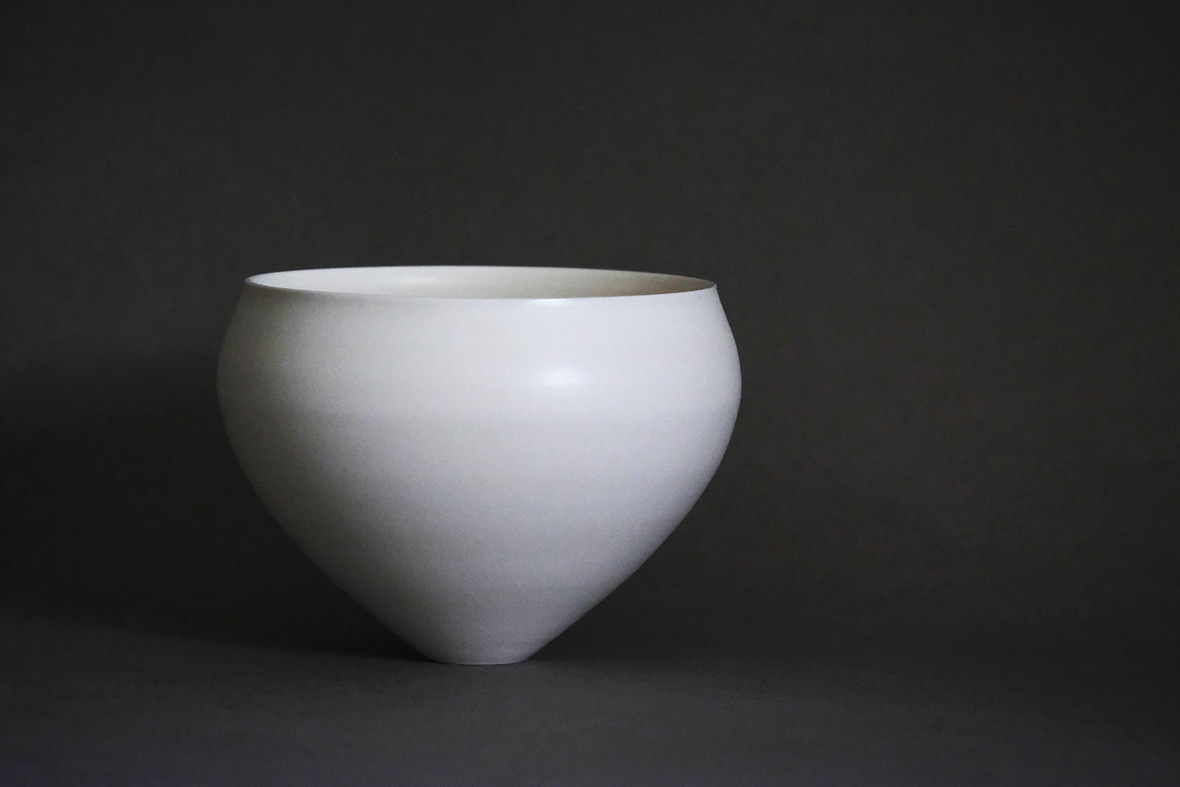
Peng’s decorative patterns are simple rectangles or lines of inlaid color—never drawings or images. “In my opinion, good decorative techniques are achieved using the essential plasticity of the clay, so I opt for engraved lines and dimples, which I then inlay with liquid clay of a different color.” Adding a painted design or image would mean treating the vessel itself as a surface medium and ignoring its plasticity, something he refuses to do.
Exquisite as they are, these bowls are still unmistakably human: the lines and miniature holes show slight handmade irregularities, subtle evidence of their maker’s touch. Yet Peng doesn’t self-consciously attempt to assert his presence or create a rustic look. “For me, hand-crafting is a production method, not a style, so I aim for accuracy and avoid an easily visible ‘handicraft’ quality,” he says. “I let the hand-craftedness become a trace, naturally left on the works.”
在陶器的装饰图案方面,彭程主要都是运用简单的矩形或镶嵌色线,从不会画画或描画图像。“我认为好的装饰手法,是运用了陶土最本质的可塑性完成的,所以我选择刻线、打点而后镶嵌纹样。”在陶器上描画图案意味着将容器本身视为一种表面的媒介,这否定了陶器的可塑性,所以他拒绝这样做。
虽然他的陶器作品外观精美,但仍然充满手作感:线条和小孔的细微不规则性,透露出制作者的创作痕迹。但是彭程并没有刻意要在作品上宣示自己的存在或营造出质朴的手作效果。“对于我来说,手工是一种制作方法,不是风格,所以我避免显而易见的手工感,在尽可能追求达到精准的同时,让手作作为一种痕迹,自然地留存在作品中。”
Linger, which includes vessels that Peng has made over the past two and a half years, comprises six distinct collections, each named after a different location in or impression of Kyoto: Golden Pavilion, Silver Pavilion, Moon River, Pale Water, Late Sakura, and Virgin Snow. “It’s the lingering thought of cherry blossoms falling, the lingering thought of virgin snow before it melts in your hand,” he explains.
Yet Linger is just the show’s English title. Its original name is 残念—cannian in Chinese, though it’s actually a Japanese word, zan’nen, that means remorse or regret.
“I lived in Japan for two summers and studied Japanese. I really like that word,” Peng says. “You can say it whenever something disappointing, tragic, or unfortunate occurs, whether big or small. Literally, zan means remaining or unresolved, while nen carries the sense of remembrance. So zan’nen is an unresolved thinking about something that’s lost or gone.” Yet the word also carries a note of acceptance or resignation. “I think this word conveys a complex state of mind, a whole understanding of loss and gain, in fact.”
此次展览《残念》将展出彭程在过去两年半中制作的陶艺作品,其中包括六个不同的系列,每个系列分别以京都的不同地点或景色命名:金阁寺、银阁寺、渡月、浅川、晚樱、细雪。 他解释说:“通过陶瓷实现一种京都式的绝美,是我在做陶的六年中一直不忘的念想。”
《残念》这个标题源于日语单词 “ざんねん”,意为懊悔或遗憾。“我在日本生活过两个夏天,学习日语。我很喜欢这个词。什么不愉快的、悲伤的、遗憾的事情发生了,或大或小,都可能说这个词。从字面上看,‘残’是残留、未了,‘念’是念想,所以残念是对失去或逝去的事情的一种未了之念。” 但是这个词也流露出一种自然而然的接纳。“我觉得这个词传达了一种很复杂的心态,其实是一整套对得与失的理解。”
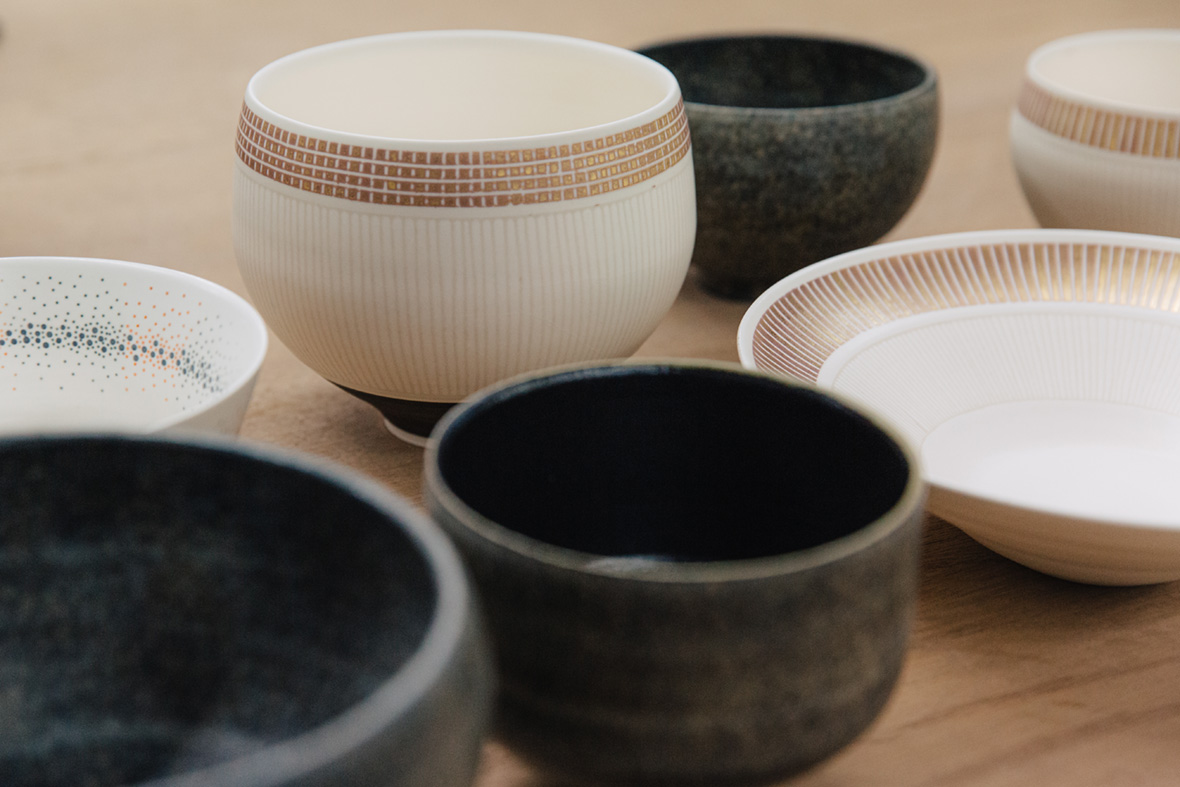
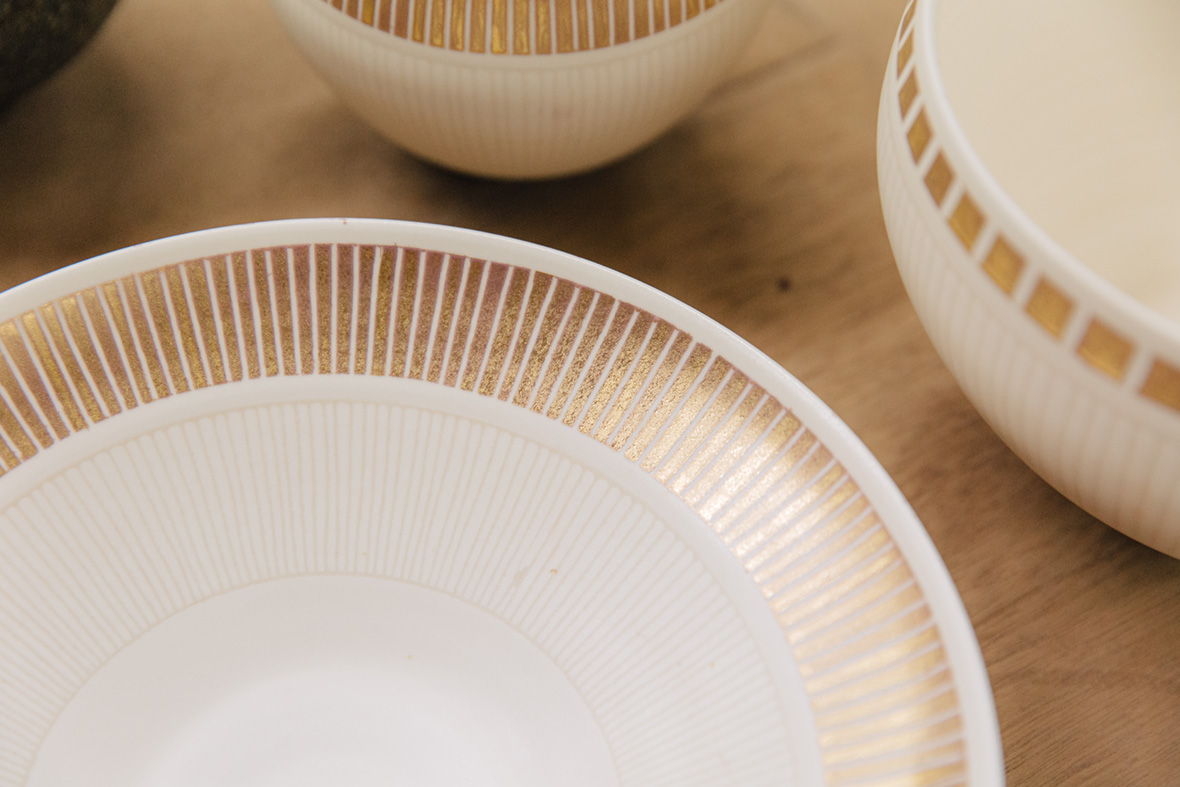
Peng grew up in Beijing and moved to the US for university. At Vassar College he majored in East Asian Studies, with an emphasis on Chinese and Japanese aesthetics, and in particular on the history of Buddhist art. Awarded a prestigious Thomas J. Watson fellowship for international exploration, he spent the year after graduation traveling the world, visiting England, Germany, Turkey, India, and Cambodia, among other countries, before returning to Beijing. Angkor Wat, where he spent a week, left an especially impression on him, as did the Hagia Sofia in Istanbul.
Given his background in Buddhist art, along with the philosophical name of his new show, you might expect Peng to find a spiritual dimension to working with clay. Yet he’s unequivocal on this point. “I’ve come to realize that when something has a so-called ‘spiritual meaning,’ that means it’s not fully integrated into your life,” he says. For him, working with clay is something altogether more ordinary. “Making pottery is like eating, sleeping, or breathing, an entirely natural part of my life.”
彭程在北京长大,后来就读于美国瓦萨学院,主修东亚学研究,侧重于中国和日本美学,尤其是佛教艺术史。毕业时,获得了著名的 Thomas J. Watson 奖学金支持,他在一年里环游世界各地,探访英国、德国、土耳其、印度和柬埔寨等国家,最后回到北京。其中他在吴哥窟度过的一星期以及伊斯坦布尔的圣索非亚大教堂 (Hagia Sofia) 给他留下了尤其深刻的印象。
鉴于他在佛教艺术的学术背景以及充满哲思的展览名字,你大概会认为制陶对彭程来说有着某种精神层面的意义。然而,关于这一点,他却毫不含糊地表示:“我意识到,当一个事情对你有所谓的‘精神意义’,说明这个东西没有完全和你的生命融合。做陶瓷和吃饭、睡觉、呼吸一样是我生活中现在非常自然的一部分。”
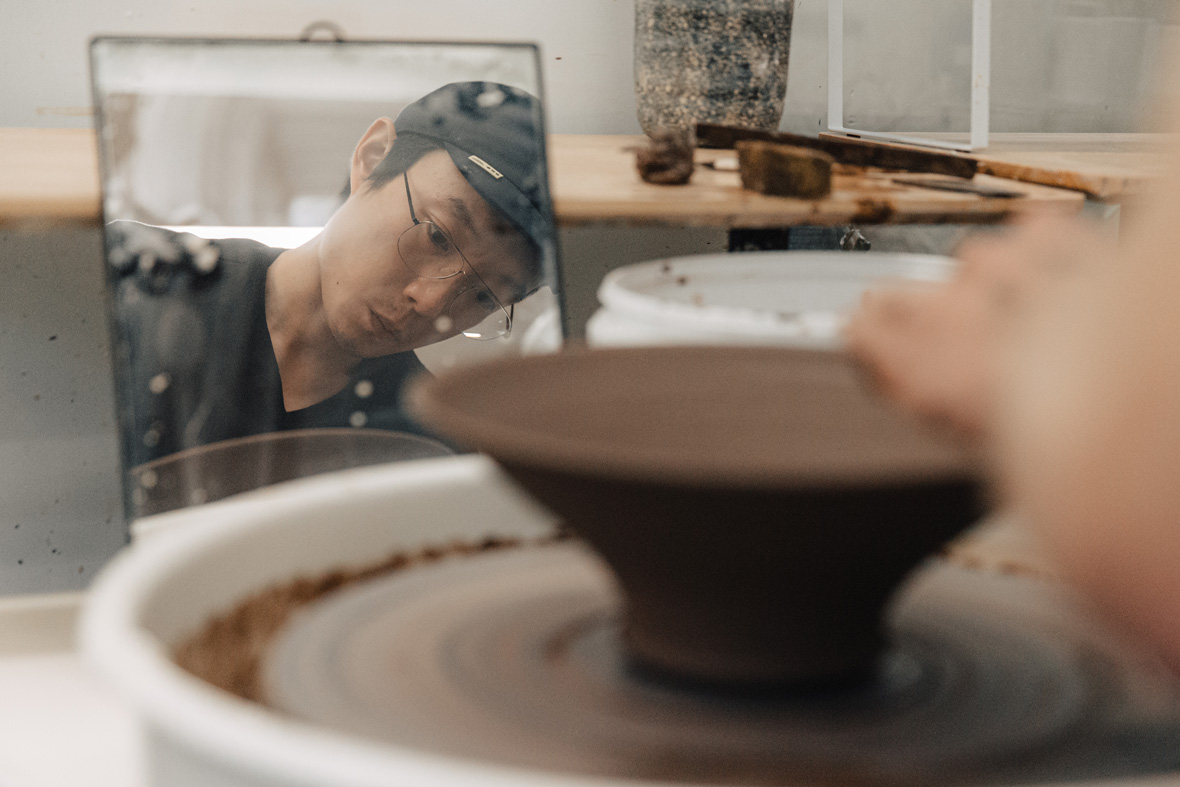
Still, pottery speaks to permanence and loss in a particularly eloquent way. As Peng likes to point out, pottery was one of the first things humankind invented that could last more than a lifetime. “Leather, wood, and rattan all follow nature’s cycle of life and death, yet pottery can be passed down from generation to generation. It gives people a sense of possession beyond time,” he explains. “And because you can only lose what you can possess, with pottery people also learned sorrow and acceptance. I find this very romantic.”
For now, Peng continues to work during the week and spend nearly every weekend on his art. He’s not sure what the future will hold, but he remains open. “My only hope is that, whatever changes occur in my environment or my lifestyle, I can keep doing this,” he says. “When you create a bowl, it’s not something you can plan. It’s a process that unfolds as you go along.”
尽管如此,陶瓷依然让人对永恒和失去有所感悟。正如彭程所说,陶瓷是人类最早发明的能够世代传承的物体之一。“当皮革、木器、藤编都在自然的循环中生死往复,陶瓷却可以被世代相传,让人们产生一种超越时间的‘拥有感’,而因为可以‘拥有’,才可以‘失去’,于是,人们学会了‘遗憾’,学会了‘接纳’。我觉得这个想象很有诗意。”
目前,彭程周一到周五仍然会上班工作,到了每个周末就沉浸在艺术创作中。他不确定未来会怎样,但他始终保持开放的心态。“唯一的希望就是不管生活的环境、方式发生什么样的改变,我都可以继续做下去。因为做陶瓷不是个可以计划的过程,是在实践中发展变化的过程。”
Exhibition:
Linger
Dates:
May 23 to June 7, 2020
Address:
Chinale
774 Changle Road, Lane 22, No. 101
Jing’an District, Shanghai
Opening event with the artist:
May 23 and 24, 2:00 – 7:00 pm
展览:
残念
展期:
2020 年 5 月 23 日至 2020 年 6 月 7 日
地址:
常乐(CHINALE)
上海市静安区
长乐路 774 号 22 弄 101 室
开幕式:
2020 年 5 月23 日和 24 日,下午 2 点至 7 点
Like our stories? Follow us on Facebook and Instagram.
WeChat: pengcheng_ceramic
Contributor: Allen Young
Photographer: David Yen
Chinese Translation: Olivia Li
Additional Images Courtesy of Chinale

